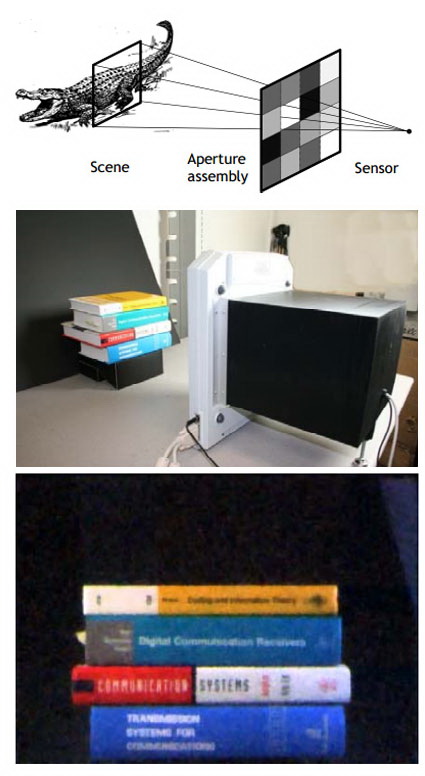Featured Products
Bell Labs could revolutionize the digital imaging market with the help of a lensless camera based on the so-called “compressive sensing” which uses a single pixel.
Bell Labs is looking to demonstrate that the imaging industry is not stagnating. Researchers at the development facility are responsible for inventing numerous things, such as the laser, UNIX, C++, the transistor, and the popular charge-coupled device found in many cameras.

Bell Labs researchers have developed a camera which uses a one pixel sensor and an aperture assembly to capture images. It does not need a lens, instead relying on compressive sensing technology, meaning that the whole system could indeed revolutionize the digital camera market.
Lensless camera based on “compressive sensing” technology developed by Bell Labs researchers
The scientists at Bell Labs have also won Nobel prizes for their discoveries and it seems like they are about to revolutionize the world once again. The latest invention consists of a new type of camera, which relies on a single pixel to capture images, instead of a lens.
The new technology is based on compressive sensing, which, in fact, describes the definition of redundancy. Researchers believe that a lot more can be obtained from fraction of the data we are using today and that actually humanity needs to improve its measurements.
Scientists at Bell Labs have found a way to look at measurements more efficiently and reassemble the data in a proper way. This technique has already been demonstrated by scientists at the Shanghai Institute of Optics and Fine Mechanics, China, who have been able to create a 3D image using a single pixel.
Bell’s lensless camera consists of one pixel sensor and an aperture array in an LCD panel
The technology has been taken further by New Jersey-based Bell Labs. Gang Huang and his colleagues have created a camera which makes use of compressive sensing to create photos. It does not need a lens, like cameras in the past 150 years, instead relying on one pixel.
Scientists say that the mechanism is based on a cluster of apertures, which consists of an LCD panel, and an image sensor. Moreover, this device will never create out-of-focus images.
There are several apertures in the LCD panel. Each one allows light to get through it and each one is closed at some point. However, the array is not pre-determined, as the whole process must be random in order to ensure that all three colors of the light reach the single-pixel sensor.
Want higher-quality images? Use the aperture array to capture more shots
Creating the photo is pretty easy, as the sensor captures the light as a conventional sensor. As stated above, the pattern of apertures is random, meaning that the device must record the same image multiple times.
After that, the compressive sensing technology is analyzing the data and it recreates the image. The researchers have also demoed the technique by releasing a test photo, which has been captured using a small amount of data.
Bell Labs claims that the more frames the apertures capture, the higher quality the resulting image will be.
Advantages over conventional cameras
Scientists have emphasized on the advantages of their lensless camera and its potential implications in the world of digital imaging. They say that the images use less data, therefore photographers would no longer require large storage accessories.
Moreover, the lack of lens means that chromatic aberrations are a thing of the past. Users will not have to retort to lens corrections, while photos will never be out of focus.
According to Bell Labs, the megapixel wars will also come to an end. If photographers want a higher-resolution image, then they will simply have to capture more frames using the aperture array.
Compressive technology could also make 3D images a lot easier to capture. Camera makers will still have to use two image sensors, but they will be able to use the same array of apertures.
Last but not least, lensless cameras will be very cheap to manufacture. The early prototype has been made out of “off-the-shelf” parts, which are inexpensive.
There are some disadvantages, too
The researchers have admitted that there are some drawbacks, as well. They say that it takes a lot of time to gather the data for the image, especially if you want to obtain high-quality photos.
Additionally, the camera is not capable of recording videos. Since a single frame requires a large amount of time to be re-assembled, it is impossible to record motion pictures for the time being.
Still, the good thing is that the technology will evolve in the near future and it remains to be determined what other cool things one could do with compressive sensing.






































